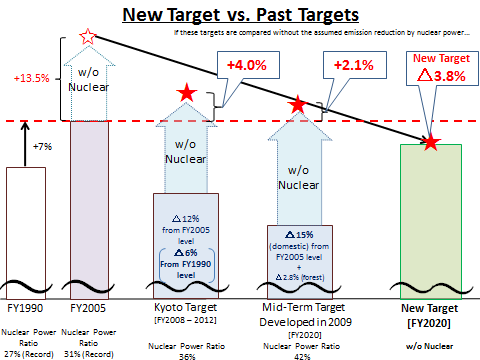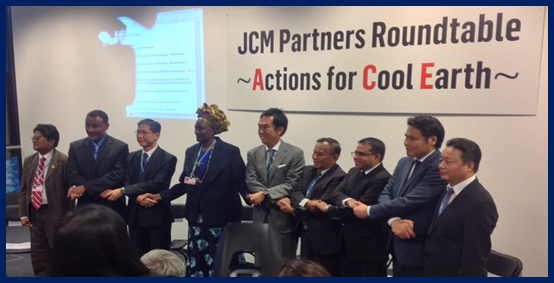Global Environment
Warsaw Climate Change Conference, November 2013
At COP19 in Warsaw in November 2013, Environment Minister Mr. Ishihara put forward Japan's new emission target and a diplomatic strategy "Actions for Cool Earth". Japan will take the lead in international discussion toward agreeing to a new international framework applicable to all countries in 2015.
The 19th Session of the Conference of the Parties to the United Nations Framework Convention on Climate Change (COP19) was held in Warsaw from 11th to 23rd November 2013. From Japan, the Environment Minister Mr. Ishihara and officials from relevant ministries attended the meeting.
Japan brought two key messages to the Conference.
The first message was a new emission target by 2020. In January 2013, the government started a zero-base review of the earlier 25% reduction target that was established in 2009 before the Great East Japan Earthquake. At COP19, Mr. Ishihara put forward a new 2020 reduction target of 3.8% from 2005 level in his national statement. This new target, which may appear to be less ambitious, is a target at this point, which has not yet taken into account the emissions reduction effect resulting from nuclear power. A firm target will eventually be set, based on further review of the energy policy and energy mix. This is an ambitious target that requires improving its energy efficiency by 20 percent, which is already at the world's top level.
The second message is a proactive diplomatic strategy for countering global warming, entitled "ACE: Actions for Cool Earth". Toward the goal to reduce emissions by 50 percent at the global level and by 80 percent in the developed world by 2050, Japan will promote further technological innovation. Japan will promote emission reductions in developing countries by diffusing advanced low-carbon technologies, through the Joint Crediting Mechanism (JCM). Furthermore, in the area of mitigation of and adaptation to climate change, Japan will provide support to developing countries totaling 1.6 trillion yen, about16 billion US dollars, during the 3-year period from 2013 to 2015, making use of ODA, OOF and private flows.
With these messages, Japan contributed to the negotiations toward the agreement at COP21 in 2015 on the new post-2020 legal framework, aiming at the deliberations on the elements of the future framework and the clarification of the work plan toward 2015. The negotiations resulted in decisions that all Parties should initiate or intensify domestic preparations for their intended nationally determined contributions, and communicate them well in advance of COP21 (by the first quarter of 2015 by those Parties ready to do so), and that the information that Parties will provide when putting forward their contributions should be identified by COP20 in 2014. The conference also adopted decisions on climate finance, and on the establishment of the Warsaw international mechanism for loss and damage associated with climate change impacts.
Further international meetings are scheduled in March and June 2014, followed by the UN Climate Summit in September, and COP20 in Lima in December. Japan will take the lead in further negotiations toward a 2015 agreement.

Japan's earlier emission targets had taken into account the emission reduction effect by nuclear power. By comparing the reduction rates without this effect, it can be understood that the new target has higher ambition than earlier targets.

The Joint Crediting Mechanism (JCM) is a mechanism in which Japan facilitates the diffusion of advanced low-carbon technologies, etc. Credit will be issued by appropriately evaluating the contribution to GHGs emission reductions or removals in developing countries, Japan will use them to achieve its reduction target. On the margins of COP19, all the eight countries that signed a bilateral document on the JCM gathered at the JCM Partners Roundtable upon which Minister Ishihara addressed the members as the "ACE Club".
Related Links
- Proactive Diplomatic Strategy for Countering Global Warming (MOFA)
- Statement by Nobuteru Ishihara, Japanese Minister of the Environment, at COP 19 [PDF]
- Japan's National Greenhouse Gas Emissions in Fiscal Year 2012 (Preliminary Figures)
- Climate Change Policies & Measures in Japan [PDF 1,805KB]
- COP19 Side Events at the Japan Pavilion